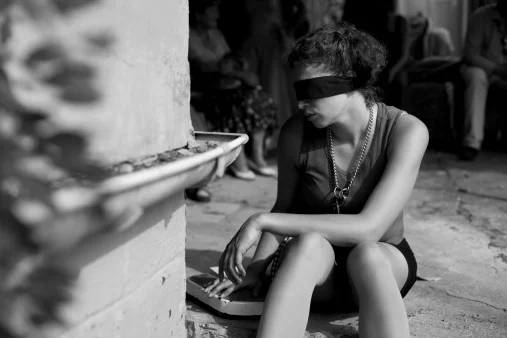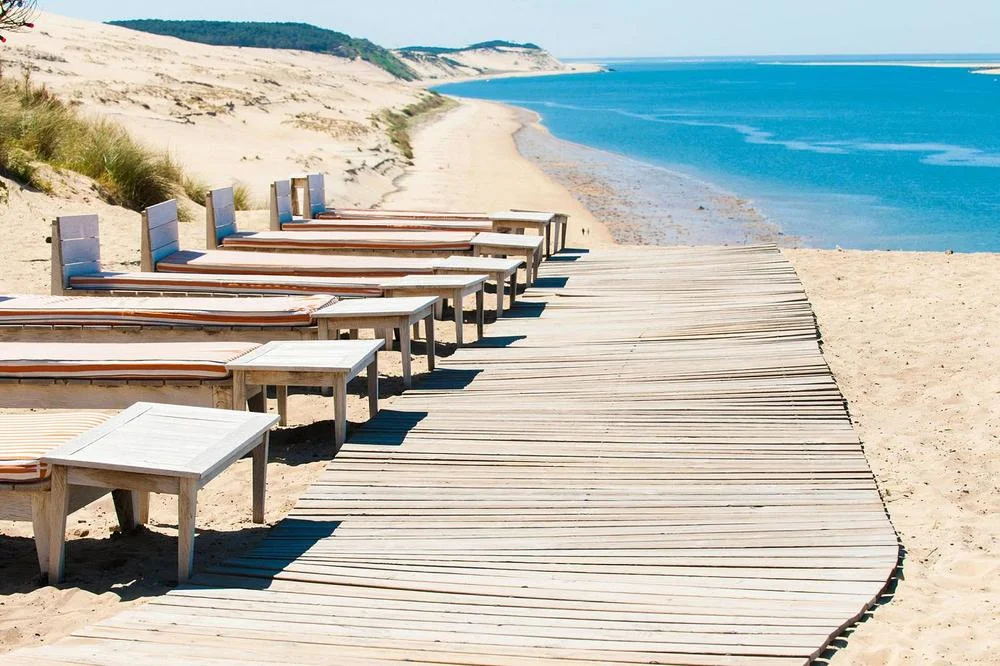Wine and Meditation
What does it mean to know a fine wine? Too often we only see what we have been taught to perceive. We measure wines against established categories and personal prejudices about what defines quality. What would happen if instead of rushing to identify or critique, we put aside the reductive methods championed in most wine education classes and afforded wines the necessary time and attention to unfold and reveal themselves naturally. What if we began to value presence over mastery?
What does it mean to know a fine wine? Too often we only see what we have been taught to perceive. We measure wines against established categories and personal prejudices about what defines quality. What would happen if instead of rushing to identify or critique, we put aside the reductive methods championed in most wine education classes and afforded wines the necessary time and attention to unfold and reveal themselves naturally. What if we began to value presence over mastery?
I came around to this way of thinking after writing a profile on the Swedish rare wine merchant Peter Thustrup. Peter is a classicist who specializes in Bordeaux and Burgundy. He advises private collectors and arranges esoteric tastings of hard-to-source vintages. He is also an autodidact who learned by tasting, taking notes and studying his own responses. I first interviewed Peter on the veranda of the Maidstone Arms in East Hampton after he had sold his eponymous Paris shop and spent the five years of his non-compete curating a deep and idiosyncratic personal collection. During one of our follow up conversations, he confessed to meditating on wines. This detail did not fit into my initial story; a profile in seven hundred words is a form of haiku, fleshing out the impulse to drink alone in silence is a story unto itself.
The idea took root in my imagination. What if instead of writing a technical note using a controlled set of descriptors, you let the wine speak for itself? Not all bottles are worthy of such lavish consideration, but for a wine with something to say, silence and presence could set the stage for eloquence. I decided to give it a try. I blocked off two hours on a Tuesday afternoon and looked in my storage unit for a bottle that was up to the challenge. Many were appealing, but none were right for the job. How could I trust the results if I were to meditate on a wine I knew well, or one that fit too neatly in my comfort zone? Then I recalled the La Clarté de Haut-Brion, a sémillon-based blend from Pessac-Leognan produced with fruit from the Haut-Brion and La Mission Haut-Brion vineyards, which serves as a second white wine for both chateaux. I had only encountered it once, as part of an overview of the Haut-Brion portfolio, but the way its delicate floral aromas were contained within a structure that was at once firm and transparent, evoking a bed of wildflowers within a formal garden, had left an indelible memory.
La Clarté was not a wine I could pick up in my neighborhood shop. Only a thousand cases are made each year and most are sold through retailers that do robust business in blue-chip Bordeaux. I ordered a bottle through Sherry-Lehmann and was pleased to discover that it goes for one-tenth the price of its more celebrated cousins. When the hour of the tasting approached, I took out a Zalto Universal glass, a corkscrew and a favorite silk scarf. Freelance writers do a lot of odd things when their children go to school and their spouses go to the office, but I have never felt quite so self-conscious as when I tied the silk scarf around my forehead and pulled out the cork. I checked to make sure the wine was in good condition and etched out a preliminary technical note, which confirmed my earlier experience. Then I sat on the floor with my back to the wall, slid the blindfold over my eyes and pulled the knot tight.
I took a few breaths to relax and immediately my attention focused on the delicacy of the stemware and the weight of the wine in the glass. Lifting the bulb to my nose, I took in the the wine's warm honey tones. Over time, like the reflection in a kaleidoscope, its dominant aromas shifted from raw honey, to ripe melon to white flowers to wet stones. I took a small sip and felt the impression of saline waves crashing on the sides of my tongue. The next time I sniffed, it was as if I were inhaling sea air tinged with apricot and hints of burnt caramel. Even though this is a bone-dry wine, the aromatics were reminiscent of Sauternes, the sémillon-based sweet wine made from grapes concentrated by the noble rot botrytis in vineyards an hour south of Haut-Brion.
Finally, I took in a generous mouthful. A rush of acid declared the wine’s youth, registering in the quickening of my heartbeat. For all its grace, the 2009 La Clarté wanted me to know it was still a baby with loads of drive and freshness. I have consumed enough bottles to see down the road. In five years or so, the wine will soften and communicate in more nuance and leveled tones.
Beneath the blindfold, I closed my eyes and tried to paint a mental picture of the wine to remember it by. I saw a woman standing on the roof of a grand chateau looking over the pine forest to a melon stand alongside a honeysuckle bush near an ocean dune, perhaps the Great Dune of Pilate in Arcachon, the beach that lies directly to the west of Pessac-Leognan. The image was a reminder that terroir is not just the dirt beneath your feet, but the spirit of a locale, and that the innate formality of the finest wines in Bordeaux are balanced with a refined attunement to the natural world.
La Co(o)rniche, Pyla-sur-mer
The La Clarté is not an aperitif wine. It begged for food that is at once bright and toothsome -- roasted oysters bathed in salted butter, seafood cassoulet, rotisserie game bird. That night I served it a with lentil and sweet sausage soup, which was delicious on its own yet when paired with the La Clarté utterly masked the wine's charm: dimming what made it fresh and floral, calling attention to its weight on the palate. La Clarté means clarity, with the soup I experienced only obfuscation. I put the bottle away.
The next evening I made a dish inspired by a Norwegian schoolteacher named Gro Bygdevoll, who turns her home on the island of Myken into a restaurant called Karenstua Café for six weeks each summer to celebrate the midnight sun. There is only one item on her menu, snapper in herbed butter. It's my favorite kind of recipe, adaptable, delicious and easily understood in a paragraph, which I have included below the story. This time the meal and the wine were in balance. Each was delicate and rich, of the earth and of the sea, fragrant and satisfying, contemplative and vivacious. We call this a pairing, but really its more of a lively dialogue, two dynamic personalities drawing each other out.
This exercise may seem frivolous, but after two days with the La Clarté I grew conscious of the distinctions between knowing and observing; judging and receiving; interacting and sharing. The practice of presence removed the pressure to perform, to show what you know and put the focus squarely on the wine itself. I found myself wishing I had stayed in the reflective state a bit longer, wondering what would have happened if I had summoned more patience.
I've listed 9 more wines worthy of the blindfold below the recipe for the Red Snapper Karenstua. Most cost far less than the La Clarté. All exhibit depth, typicity, grace and interest.
Red Snapper Karenstua: On a clean plate, season both sides of two 8-ounce snapper filets with salt and pepper. Melt 2 tablespoons of butter in a cast-iron skillet or heavy nonstick sauté pan over medium-high heat. Lay the snapper skin-side down and cook for three minutes, until the skin has contracted and the fish appears to float. Using a fish spatula, gently turn the snapper fillets. Add a clove of minced garlic to the pan and cook for three more minutes, until the fish flakes when pierced with a fork. Sprinkle 3 tablespoons of mixed minced fresh herbs -- dill, oregano and parsley are a winning combination -- on the skin of the fish. Spoon the melted butter over the herbs and serve the snapper directly from the skillet.
10 Wines for Meditation
- Alsace
- Amarone
- Architecture
- Assyrtiko
- Australia
- Austria
- Barbaresco
- Biodynamics
- Bolgheri
- Books
- Bordeaux
- Burgundy
- Cabernet Franc
- Cabernet Sauvignon
- California
- Champagne
- Chardonnay
- Chinon
- Cinsault
- Collecting
- Cycle of the Vine
- Dolcetto
- Entertaining
- France
- Gadgets
- Gigondas
- Greece
- Grenache
- Grüner Veltliner
- Holidays
- Hotel
- Importers
- Israel
- Italy
- Kamptaland
- Kosher
- Loire Valley
- Medoc
- Merlot
- Mouvedre
- Napa
- Nebbiolo
- Nero d'Avola
- News
- Pairings
- Pessac-Léognan
- Piedmont
- Pinot Noir
- Pomerol
- Pommard









